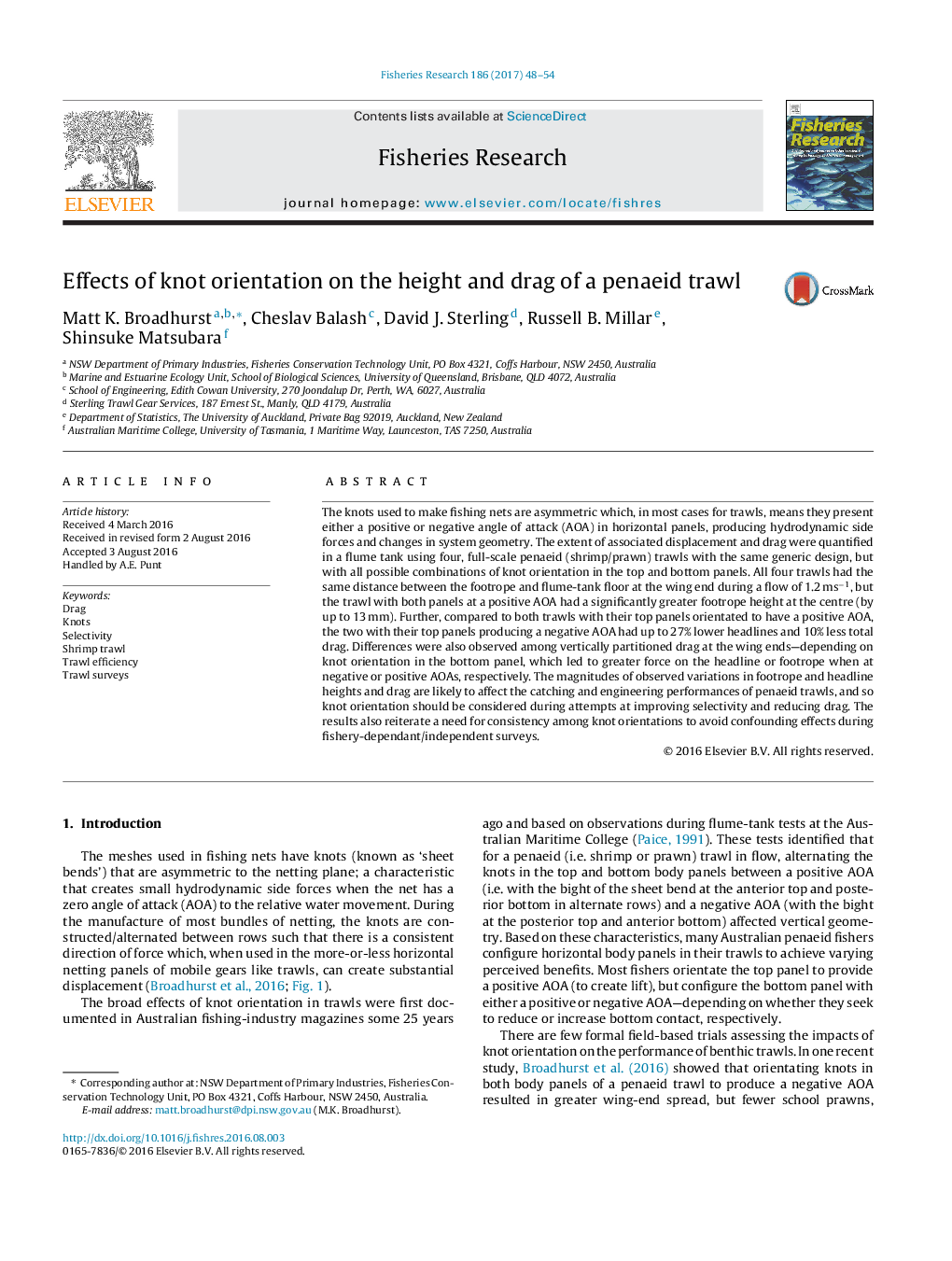| Article ID | Journal | Published Year | Pages | File Type |
|---|---|---|---|---|
| 4542600 | Fisheries Research | 2017 | 7 Pages |
The knots used to make fishing nets are asymmetric which, in most cases for trawls, means they present either a positive or negative angle of attack (AOA) in horizontal panels, producing hydrodynamic side forces and changes in system geometry. The extent of associated displacement and drag were quantified in a flume tank using four, full-scale penaeid (shrimp/prawn) trawls with the same generic design, but with all possible combinations of knot orientation in the top and bottom panels. All four trawls had the same distance between the footrope and flume-tank floor at the wing end during a flow of 1.2 ms−1, but the trawl with both panels at a positive AOA had a significantly greater footrope height at the centre (by up to 13 mm). Further, compared to both trawls with their top panels orientated to have a positive AOA, the two with their top panels producing a negative AOA had up to 27% lower headlines and 10% less total drag. Differences were also observed among vertically partitioned drag at the wing ends—depending on knot orientation in the bottom panel, which led to greater force on the headline or footrope when at negative or positive AOAs, respectively. The magnitudes of observed variations in footrope and headline heights and drag are likely to affect the catching and engineering performances of penaeid trawls, and so knot orientation should be considered during attempts at improving selectivity and reducing drag. The results also reiterate a need for consistency among knot orientations to avoid confounding effects during fishery-dependant/independent surveys.
